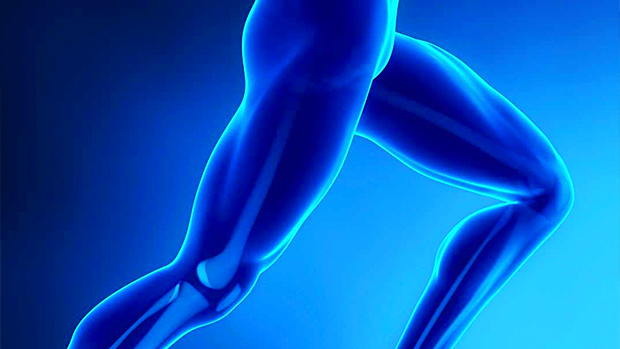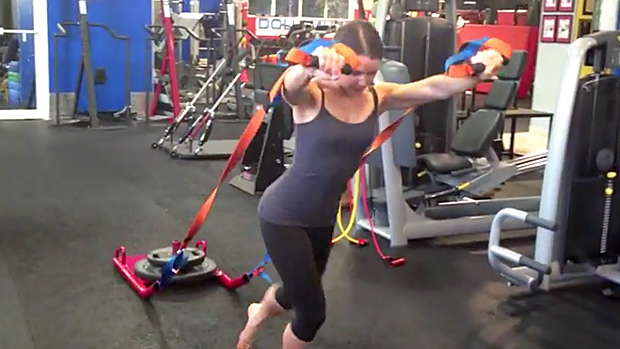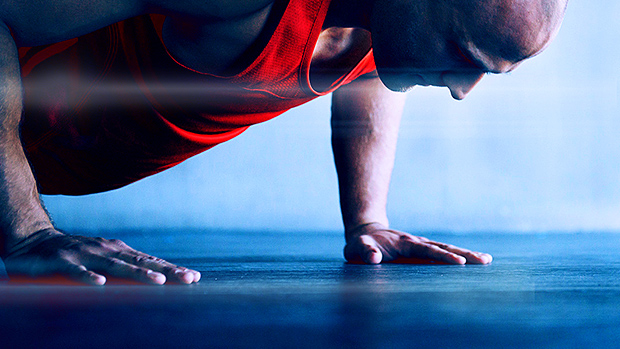The IT band doesn't get much mainstream ink.
While entire eBooks have been devoted to "sexier" topics like strengthening the rotator cuff and foam rolling, the lowly IT band tends to fly underneath the average lifter's radar, mired in relative anatomical obscurity.
Until, that is, Dr. Stickenthemudd, chairman of the No Squats Below Parallel Society, informs you that the loud popping sound your knee makes when you walk is the onset of iliotibial band syndrome, and unless your backup plan is to audition for the next Lord of the Dance reprisal, it's time to switch from full squats to more "knee friendly" leg extensions.
Suddenly, learning about the IT band becomes top priority.
Let's begin with some basic anatomy.
The iliotibial (IT) band is a fibrous enhancement of the fasciae latae muscle that crosses over the side of the knee joint and adds stability to the knee. The IT band extends from the crest of the ilium to the lateral condyle of the tibia, joining the capsule of the hip joint, with the lower end passing over the edge of the lateral femoral condyle. This is the area where the lower part of the femur bulges out above the knee joint.
In more practical terms, you can feel the IT band on the outside of your thigh when you contract your leg muscles, and if you ever complain that your outer thigh is tight and painful, or experience something "snapping" on the outside of your knee when you run, you may have some stage of IT band syndrome.
Movement Categories
In his book, "The Complete Book of Stretching," former Pittsburgh Steelers strength and conditioning coach Paul Uram divides the qualities of human movement into four categories, each with specific attributes.
- Flexibility – Range of Motion
- Strength – Intensity of Motion
- Speed – Frequency of Motion
- Endurance – Duration of Motion
Obviously, many of these qualities overlap, which is necessary since human movement isn't created in a vacuum. In the following IT band rebuilding program, we'll focus on range of motion and then intensity of motion.
The first part of this program, flexibility, can also be called "alignment." A specific position will align the body and load weak areas while providing a stretch for the tight areas. These positions are held to allow static strength to build and promote limberness in the less-mobile areas.
The first level is holding the position, the second is moving from the position, and the third is adding resistance.
Holding the Position
Let's begin with two yoga positions that have worked for many of my clients. I've heard this position referred to as Bound Angle, amongst other names, and it forces alignment in the knees, hips, and torso. It allows for a sustained (although painful) static hold that affects the outer head of the hamstring near the hip.
Note: Some athletes may need to use a strap to connect their hands if they're inflexible. See photos below.


- Precede with a light warm-up.
- Start with a vertical shin and with the trailing leg locked.
- Endeavor to open up the chest.
- Relaxed breathing will allow for a deepened stretch.
- Start with multiple short holds of a few seconds, building up to longer and longer holds.
The second position to align your body for the drills to follow is the Prayer Twist. See photo below.

- Precede with a light warm-up.
- Be sure to take your time to move into this position.
- Focus again on short holds and build up to longer ones. The long duration practice will build strength in the weak areas and allow the tighter ones to get "unstuck."
- This position will get easier as you progress towards optimal alignment.
Moving From The Position
With the two static positions out of the way, let's move to a dynamic one.
Close Stance ATG Squats
This is an unloaded squat with the toes pointed straight ahead and it's very hard for trainees with excessive tension in the hips. You may want to approach this in a series of steps, working your way in from your favorite squat position with your thighs externally rotated to one with your upper legs closer together and toes straight ahead. Small improvements over long periods are the key to adaptation.

A nice variation of this squat is to take 10 seconds to descend and 10 seconds to ascend. This gives adequate time to feel for tight spots, focus on relaxed breathing, and promote an increased range of motion.
Several sets of ten repetitions will do amazing things for your lower body and begin to alleviate the tension levels in the IT band area.
Adding Resistance
The last area is a loaded dynamic drill called the Russian hockey deadlift. This exercise involves both flexion and rotation; normally considered a risky activity. Attempt this exercise carefully and with very little weight. Consider practicing it weightless for a while. See photos below.


- Hold a dumbbell, barbell plate, kettlebell, or a backpack full of plates (the iron variety, not your mom's Thanksgiving dinnerware) in front of your hips with arms relaxed. Your feet should be together.
- Sit back by folding at the hips, keeping the lower back in neutral position.
- A slight rotation occurs at the waist as you touch the weighted implement to the ground right beside the ankle bone.
- Come out of this semi-squat position smoothly by firing the glutes and pushing the floor away. Maintain a tight midsection as you return to the upright position.
- If the hip/IT area is tight, you'll notice that the knee drifted slightly to an externally rotated position as the weight got close to the floor. This will occur less frequently as you practice this program.
- Repeat the same process on the other side. It's not unusual for one side of the body to feel differently than the other side.
Try ten smooth repetitions on each side. You can do multiple sets but range of motion and technique trumps resistance and volume.
Bonus!
The icing on the cake is familiar to most fitness practitioners, foam rolling the IT band. Many athletes like to do this as part of a general warm-up, which is fine, although doing it afterwards is a great way to remove residual tension. In general it's more effective to roll a warm, pumped-up muscle.
Putting it All Together
If IT band issues have left you walking like you paid your way through college by breaking stallions, don't succumb to the pressure to replace proper squats with a series of silly exercises that wouldn't challenge an osteoporotic centenarian with two reconstructed knees and zero gym experience. Instead, give this fast and effective routine a try. It can be used as a stand-alone mobility workout or as a warm-up before a hard and heavy leg workout.
- General Warm Up
- Bound Angle
- Prayer Twist
- Close Stance Squat
- Russian Hockey Deadlift
- Foam Rolling
Granted, like the IT band itself, it's not complicated or sexy, but the best training solutions are rarely the most complicated ones.
Move to a Zen-like place of peaceful coexistence with your IT bands. It's never been easier, grasshoppa.





